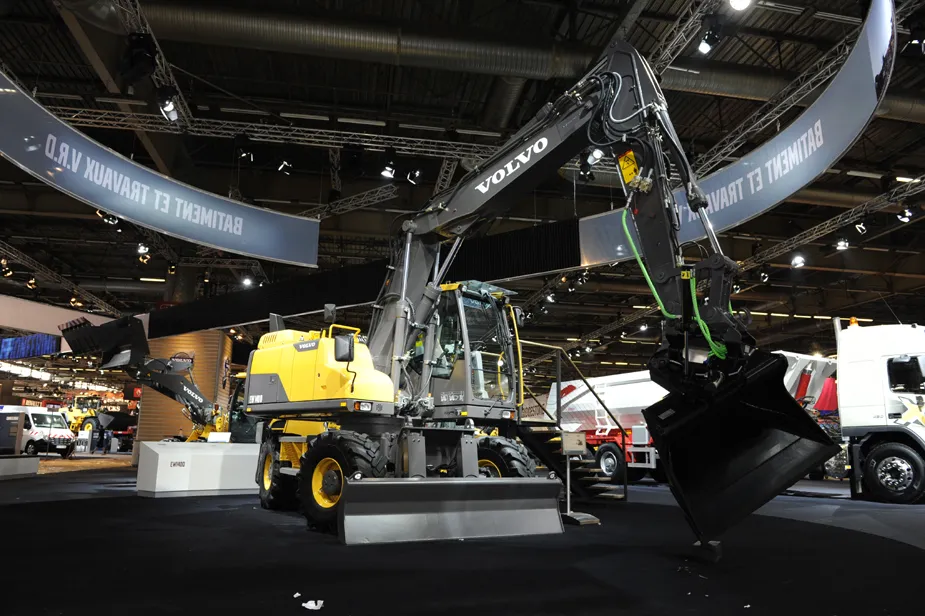Greater fuel efficiency, improved digging performance and revised styling are among the changes to be found on Volvo’s latest D-series wheeled excavators. The four-model EW range spans 14-21tonnes and benefits from a new engine, cab, hydraulics, substructure, boom, arm and controls. There is more power with D-series, from stage IIIB engines that use V-ACT technology. The four cylinder (EW140D) and six cylinder engines produce high torque at low engine speeds, said Volvo, giving rise to low fuel consumption.
January 6, 2017
Read time: 1 min

Greater fuel efficiency, improved digging performance and revised styling are among the changes to be found on 2394 Volvo’s latest D-series wheeled excavators.
The four-model EW range spans 14-21tonnes and benefits from a new engine, cab, hydraulics, substructure, boom, arm and controls.
There is more power with D-series, from stage IIIB engines that use V-ACT technology. The four cylinder (EW140D) and six cylinder engines produce high torque at low engine speeds, said Volvo, giving rise to low fuel consumption.
Fuel efficiency is boosted by the introduction of an Eco mode. The range also gets a fuel saving automatic idling and shut down system, based on preset periods of inactivity.
The EW range is available with a mono boom, two-piece boom, mono boom offset, and a two-piece offset boom.
2 Internal 2 4824 0 oLinkInternal <span class="oLinkInternal"><span class="oLinkInternal">View more videos</span></span> Video false /event-news/intermat-2012/video/ true false %>
The four-model EW range spans 14-21tonnes and benefits from a new engine, cab, hydraulics, substructure, boom, arm and controls.
There is more power with D-series, from stage IIIB engines that use V-ACT technology. The four cylinder (EW140D) and six cylinder engines produce high torque at low engine speeds, said Volvo, giving rise to low fuel consumption.
Fuel efficiency is boosted by the introduction of an Eco mode. The range also gets a fuel saving automatic idling and shut down system, based on preset periods of inactivity.
The EW range is available with a mono boom, two-piece boom, mono boom offset, and a two-piece offset boom.
%$Linker:
Hall: 6 Stand: C041
%$Linker:





